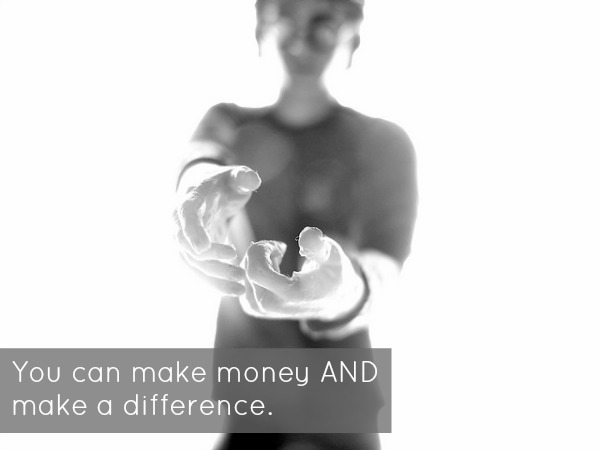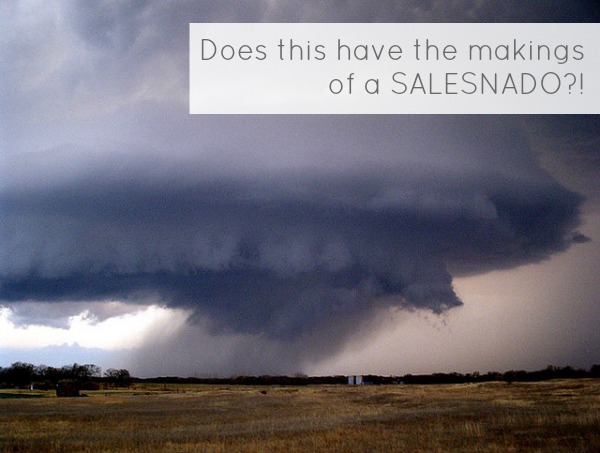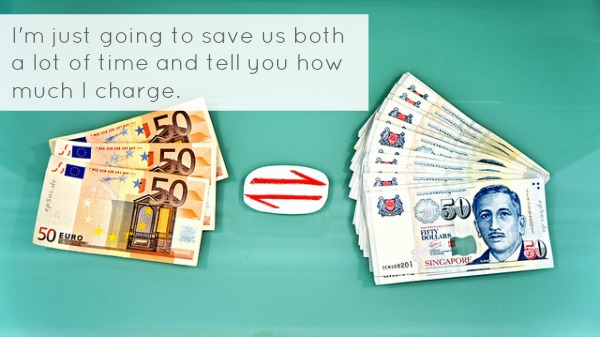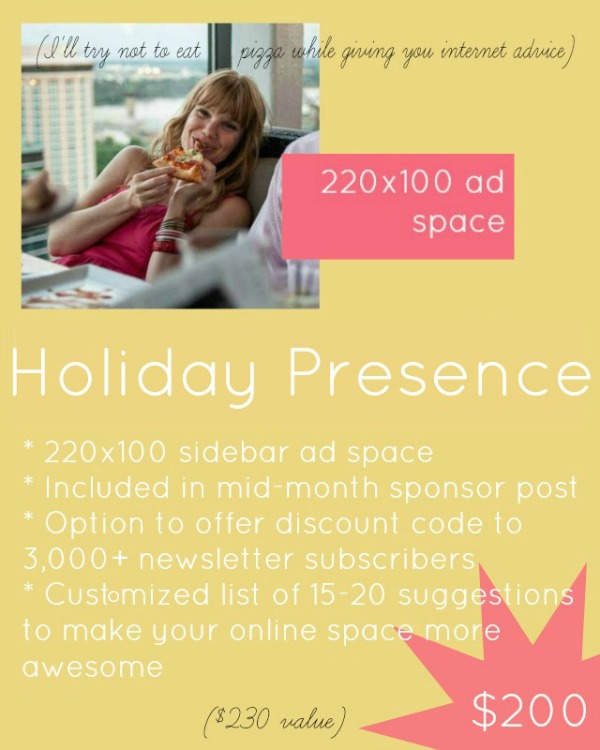When I first started my blog, I was working as an ESL teacher at a non-profit. I spent my days teaching Southeast Asian refugees how to take the bus, apply for jobs, and the difference between ‘chicken’ and ‘kitchen.’ (It’s harder than you’d think!)
I looooooved my job and I loved making a very tangible difference in the world. I did not love the fact that I only had two weeks of vacation, that I worked in a rough neighborhood in a building with very little security, that I made about two dollars. (Really. Think about how much public school teachers make. Then reduce that by 25%. That’s how much I made.)
These days I make slightly more than two dollars. I write copy for small businesses and entrepreneurs and I have a variety of consulting offerings. And for a long time I felt guilty that I made more money doing this than I did when I was doing something Unequivocally Good + Important. So in an attempt to ease my conscience, I did my best to incorporate a bit of good karma and philanthropy into my business practices - all without losing my shirt. With the holidays nearing, I’m sure we’re all in a more grateful, giving mood - so here are six ways you can build good karma into your business without losing lots of money.
1. Do a pay-what-you-can sale and donate the proceeds to charity
On your birthday, your company’s anniversary, or on a special holiday, why not run a pay-what-you-can sale on some of your older info products? Or some overstock in your inventory? It’ll free up some space in your storeroom, introduce new people to your products, engender goodwill, AND bring in money for a good cause. I did this with my 2012 Year in Yes calendar and was able to raise money for 1,000+ meals through Feeding America.
2. Contribute a portion of pre-sales to a charity
If you’ve got a amazing new course or a physical product coming out, you can build buzz and bring in a bit of ahead-of-time money by contributing a portion of your presale profit to charity. It’ll make people more likely to pre-order (so you’ll have a better idea of how many items to manufacture) and defray your upfront costs. If you partner with a smaller, local charity they’ll probably even help you promote your product! I’m donating $1 from each pre-sale of my 2014 Puss In Books calendar to Feline Rescue, a local no-kill shelter that fosters, socializes, and re-homes stray cats in the Twin Cities.
3. Offer scholarships
If your offerings are expensive-ish, consider offering scholarships once a year; you can make it easy by creating a Google form that applicants can fill out. If there are tons of qualified applicants that would benefit from your help, you can reach out to a select few and offer them your services at a discounted rate. I did this last year and gave away a Solution Session to the very, very deserving Arc’s Value Village.
4. Highlight up-and-comers
Even if you’re not in a position to donate your time or profits, you can share a bit of your internet limelight with people who deserve it. If you’re working with an amazing designer/developer/writer/VA - tell us. (I love Scott Puhl for app design, Kim Lawler and Sara Misconish for design, Leslie Plesser and Meredith Westin for photographs). When you read useful, helpful things, share those discoveries with your Twitter and Facebook followers. When people do great things, email them and tell them you liked it!
5. Promote or partner with other companies who promote social causes
Do you offer ad space on your blog? Offer discounts to non-profits or companies who have built philanthropy into their businesses. If you’re a beauty, fashion, or lifestyle blog you can tell your readers about retailers who offer ethically sourced items. Reach out to businesses who promote causes you care about and see how you can help them spread their message.
6. Donate a set amount of time each month to charity
If you’re a social media consultant, a developer, or a designer there are about a million non-profits who could benefit from your wisdom. Choose a block of time you know you can afford to donate and give that amount each month to a different charity. You could donate five hours of social media consulting each month or 10 hours of design work. Choose something that works for you and see who you can help!
Have you built philanthropy into your business? How do you give back?
photo by kevin dooley // cc



























